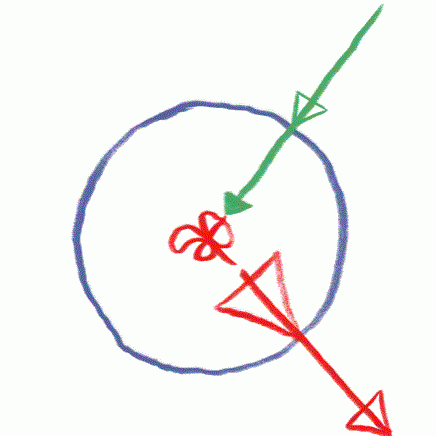
How to Mend Straining Relationships
By Benjamin Fry
The Fulcrum, Issue 81 September 2020
We were taught by fairy tales to believe that relationships would be as easy as finding the right person to be with, and then we would live happily ever after. As we know, reality is not that simple. A lot can and does go wrong, regardless of the people you are with. And when under pressure, our anatomy and neurobiology are stacked against us.
We all carry around with us baggage from our pasts… We have frozen into our nervous systems unfinished responses…
There is more that we can do about this than shouting at each other or running away, both externally, as we see happening on social media these days, and internally, as we might experience in the workplace.
Let’s look at why and how.
Dysregulation in Relationships
We all carry around with us baggage from our pasts. We understand this idea colloquially. But it is also scientifically true in our anatomies. We have frozen into our nervous systems unfinished responses to events earlier in life. These events are usually perceived by us as highly threatening, and these unfinished responses were on the spectrum of running away or fighting. Instead, just as the body was getting ready to do one of these things, we froze. And we have not yet fully unfrozen.
This leaves us with unfinished responses to earlier threats. So now, when we have a new threat, even a mild one, we can add to it the energy of a previous one, making us overreact, or to be so overwhelmed that we just freeze again and therefore under-react. This lack of proportionate response to the real level of threat in our current environment is called “dysregulation”.
A dysregulated nervous system will cause enough trouble on its own. However, when two come together, you get more than double trouble, you get dysregulation squared. This is why relationships can be so difficult and baffling.
Unfinished business in our nervous systems makes us prone to over-reacting or under-reacting to life’s triggers as adults.
These difficulties can be seen at their most acute in romantic relationships, however the theory applies equally well to all relationships, including our social, civic and political ones. This article will focus on romantic relationships by way of example, but the themes and solutions apply to all relationships.
A Second Source of Relationship Dysregulation
There are two ways that our nervous system affects our relationships and these are often confused.
Firstly, we are set up by our childhoods to have what is known as ‘attachment styles’. Broadly speaking, these are our ways of imitating the dysregulated nervous systems of our caregivers. We learned from them and so we copied their over- or under-reacting nervous systems as we tried to grow into becoming adults.
And secondly, we accumulate our own unfinished business through our lives, giving us our own baggage and therefore dysregulation. (Hopefully you can see how, if we then have children, we are the cause of the first problem above, as we try to raise our kids while we are dysregulated.)
Our Desire for Proximity
Our attachment set point from childhood can be reframed as our desire for proximity. This can make us want to have others closer or further away. But it is not always obvious how.
For example, if you have a very overwhelming, out of control parent, then you are likely to copy that and become out of control yourself. You may be extreme in romantic relationships. You do too much, say too much, try too hard, control too much, and eventually you find that these relationships make you feel out of control. So, your strategy for feeling ok is to keep relationships slightly at a distance.
However, if you have a very distant, absent parent, then you are likely to copy that and to be distant or shut down in your own relationships. This will make you feel anxious and alone and therefore want someone to be present all the time for you. You will want the other to be close, so that you can feel alive again. Losing that will feel very worrying.
You can model this desire for proximity on a continuum. Attachment theorists often label the ends of this spectrum something like anxious and avoidant, with secure in the middle. Relationship addiction counsellors often call them love addict and love avoidant.
I’m just going to call the end points of this spectrum of proximity ‘near’ and ‘far’. The middle is ‘just right’.
Our Adult Behaviour
Unfinished business in our nervous systems makes us prone to over-reacting or under-reacting to life’s triggers as adults.
Behaviour therefore is also on a continuum. We could say that at one end we over-react, on the other end we under-react, and in the middle it is just right. For the sake of argument, I’m going to take a short cut and label the extremes ‘child’ and ‘teen’. The middle is the ‘adult’. This is not the same thing as your attachment style or desire for proximity. For example, people can have great early childhoods and then become dysregulated by extreme events, like war, later in life. Equally you can have a rubbish early childhood and yet learn how to behave as if you have no baggage at all. So, they are different.
The Relationship Matrix

You can learn to simulate the behaviour of someone who does not have any baggage and is therefore reacting just right to every situation. It takes some will and practice, but it can be done.
And the magic is that if you do, then you can also change your attachment style, or appetite for proximity from something more extreme to something more secure. Here’s why.
If you draw a simple grid with these two qualities on an axis at right angles, you get a diagram that looks like this (diagram 1).

A lot of the time when we talk about relationships, we confuse these two different qualities of proximity and behaviour as the same. They are not, but they are often correlated and so can appear to be identical. Generally speaking, we find that people who prefer someone else to be ‘far’ are more ‘teen’ in their behaviour, and people who prefer someone else to be ‘near’ are more ‘child’-like.
So, people in any relationship can find themselves heading towards the top right or bottom left of this map (diagram 2), and if they go too far then there is not much of a ‘secure’ ‘adult’ left in the room in the middle.

Without this secure adult, relationships lose their capacity to be collaborative and productive. They can become confrontational and or abusive (and we can see this in our global politics of today).
But what can you do? You can’t change your attachment style easily. It is part of the way your brain is wired from childhood. But the good news is that you can always change your behaviour. So, the key to relationships is to learn the behaviour of people who live in the middle of this matrix, and to copy it.
This way we can behave like regulated adults, and re-parent our attachment systems to recalibrate to a more secure way of relating (probably at first just to ourselves). It seems like a great idea, but how do you do it?
Boundaries & Containment
Something magical happens to our regulation when we clean up our behaviour. To see why, let’s look at the two fundamental tools of behavioural health, which we can call boundaries and containment. These regulate what we receive and what we send from and to the world.
The principle behind each of them is related to some growing awareness of what is left unfinished in our nervous system and how that baggage gets triggered. Boundaries are an attempt to lessen the force of these triggers. Containment is an attempt to reduce how much of our reaction we spray onto other people after we have been triggered.

Between them they represent an attempt to begin to behave as if we had no baggage at all. It is certainly not an excuse for not allowing your feelings, or sensations, to exist. It is, however, an exhortation to try to locate these things back where they belong, which is with the unfinished business in our own nervous systems. You can look at them like this:
In diagram 4, we see a dysregulated nervous system (the red squiggle) getting impacted by life (the green triggers) and having an exaggerated reaction (the red arrow).
The blue bubble represents a boundary from the world, and a container of the self. If you look carefully you can see that the triggers are lessened by this, and the reaction thrown out to the world is reduced.

In diagram 5, the nervous system is squeaky clean. This is a secure adult. Their reaction is proportionate to what life is throwing at them. Now compare the two. What do you see? The red and green arrows, outside the blue bubble, are the same. If you imagine zooming far away from the blue bubble, the pictures look identical.
Thus, by practising boundaries and containment, you will become a secure adult, your relationships will improve and your attachment set point will shift over time. Easy, right?
Mindful Speech
In fact, it is quite difficult. But with practice and determination it can get easier. Two fundamental tips can help you to get started. Firstly, you can practise containment just with mindful speech. When you notice that you are having any kind of reaction at all, do not, ever, use the word “you”. Don’t even imply “you”.
That’s all you need to know. Think of a situation where you were greatly triggered and try it in your head. What is left to say, when you take out the “you”. Typically, now you have to start to talk about “I”. This is harder because I am in pain. It is less painful to say “you are an arse”, than to admit that “I am afraid”. If you don’t agree with me, just watch politics on tv.
Resilient Listening
The greatest gift you can give to someone trying to change the way that they speak (above) is to really, deeply, listen to them. This is another way of having boundaries. Instead of letting their words be all about you, make their words about them. Imagine that you were saying these words, and what that would feel like. Again, there is one surprisingly easy trick to doing this.
When someone is talking to you about their reactions in your relationship (especially if they are trying to practise mindful speech), listen to them like your job is to be a tape recorder. When they finish, try to mentally repeat back to them every word they said. You can even do that out loud if they are open to it. Try it. You will find that it changes everything about how you receive another’s words.
Great Relationships
Two people who can do this with each other can have a great relationship. They will offer each other the simulation of an adult, perfectly regulated and not tipping into child or teen reactions. They can then learn a new way to be with another, different from the one they received during childhood. This resets their attachment system, which in turn makes it easier to regulate their nervous system. It is a virtuous circle.
We, as a planet, need to start practising this virtuous circle now. The alternative is a vicious cycle which threatens to tear us apart, one broken relationship at a time.
Benjamin Fry, psychotherapist, author of The Invisible Lion and founder of Khiron Clinics.
www.theinvisiblelion.com
www.khironclinics.com
The opinions expressed in this article are those of the author and do not necessarily reflect the viewpoints of the CSTA.

